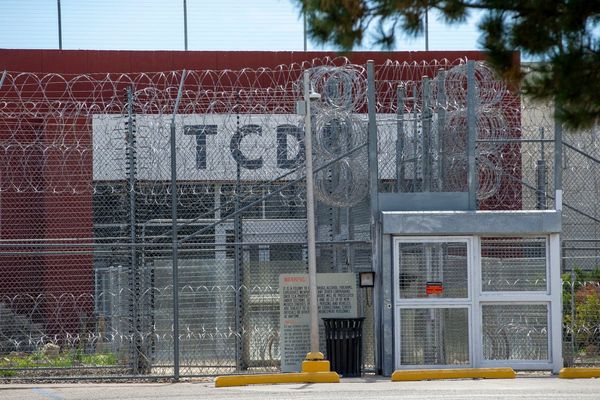/A%20Tesla%20Cybertruck%20with%20visible%20bullet%20impacts_%20Image%20by%20Karolis%20Kavolelis%20via%20Shutterstock_.jpg)
The last time I wrote about Tesla (TSLA), the electric automaker was finally ready to launch its robotaxi service in Austin. In the month since, a lot has happened in the world of Tesla and its CEO Elon Musk
Then, the stock is down about 8% over that period, Musk has launched his own political party, told one of the biggest Tesla bulls to “shut up” when he proposed some changes to the board, reported a sequential rise but yearly drop in vehicle deliveries, and opened its first showroom in India.
True to its character, Tesla has not stayed out of the headlines. And it looks like it will stay that way with the Elon Musk-led company looking to commence its robotaxi services in Phoenix, Arizona. With its Google (GOOGL)-backed rival Waymo already operating in the city, some analysts believe that Tesla’s robotaxi expansion here is a positive development.
So, as investors, is this the right time to invest in Tesla stock, which is already down about 23% on a YTD basis, or is now the time for caution? Let’s find out.

The Long-Term Tesla Story Is Still Intact
Investors with a long-term view should avoid all the noise around Tesla stock because the future of Tesla includes exciting bets such as full self-driving (FSD), Optimus humanoid robots, the Dojo supercomputer, and AI initiatives such as Grok 4.
In terms of autonomy and FSD capabilities, Tesla stands apart largely due to its tightly controlled operations across every layer of development and deployment. What differentiates the company is its extensive vertical integration. While the likes of Waymo tend to rely on outside vendors and fragmented systems, Tesla operates differently. It designs its own AI chips and FSD software, produces its battery technology, and oversees its global network of charging infrastructure. This integrated approach results in greater design speed, stronger operating leverage, and enhanced scalability. The company’s reliance on camera-based Tesla Vision lowers vehicle production costs to approximately $30,000, a sharp contrast to the estimated $100,000 required for vehicles equipped with LiDAR sensors. Though questions persist over safety trade-offs, the cost advantage remains evident.
Tesla’s position in emerging technology is also reinforced by Elon Musk’s broader portfolio. Despite recent challenges related to Starship launches, SpaceX remains focused on long-term plans around interplanetary travel. Meanwhile, xAI is reportedly on track for a capital raise that could place its valuation north of $200 billion, reflecting optimism around its AI roadmap and expanding ecosystem.
However, not all developments are favorable. Tesla faces real pressure from rising competition, especially from newer entrants in China. BYD (BYDDY) continues to scale aggressively, and now Xiaomi (XIACY) has also seriously entered the fray with the YU7, which garnered over 200,000 preorders shortly after launch. Meanwhile, in Q2 2025, Tesla delivered 384,122 vehicles, 14% lower year over year.
Further uncertainty surrounds Elon Musk’s “extracurricular activities” in the form of his politics. His relationship with former ally President Donald Trump has come under strain, most notably due to disagreement over Trump’s tax-and-spending bill. A key provision of this bill removes the federal tax credit of $7,500 on electric vehicles, undermining Tesla’s pricing advantage at a time when the company is already contending with stiff global competition. No immediate support appears forthcoming from either the European or Chinese markets, compounding concerns around Tesla’s near-term outlook.
Financials Still Not a Cause for Concern
Although there have been issues with Tesla’s financial performance in recent quarters, it is still in a good place.
However, the recently released results for the first quarter of 2025 fell short of expectations. While this underperformance may raise some concerns, it remains consistent with the growing pains of a company investing deeply in transformative technologies with long-term ambitions.
For the quarter, Tesla recorded total revenue of $19.3 billion, representing a 9% decline compared to the same period a year earlier. The automotive division, which is the backbone of the company’s operations, faced considerable pressure, with revenue sliding 20% to $13.9 billion. The firm’s ancillary units delivered stronger performances. Energy generation revenue rose sharply by 67%, while the services division posted a 15% gain, reaching $2.7 billion and $2.6 billion, respectively.
Profitability took a notable hit in the period. Earnings per share declined to $0.27, marking a steep 40% drop year-over-year and significantly missing the consensus estimate of $0.41. This shortfall primarily stemmed from a rise in input costs and a broader deceleration in the delivery of vehicles.
Even so, the company displayed considerable improvement in its cash generation capabilities. Operating cash flow for the quarter climbed to $2.2 billion, a substantial improvement from the $242 million reported in the comparable period last year. Free cash flow also returned to positive territory, registering $664 million after the prior year’s outflow of $2.5 billion. Tesla ended the quarter with a strong liquidity position, holding $37 billion in cash and equivalents.
Analyst Opinions on TSLA Stock
Taking all of this into context, the analyst community has assigned a rating of “Hold” for Tesla stock, with a mean target price of $296.83, which has already been surpassed. However, the high target price of $500 implies upside potential of about 60% from current levels. Out of 40 analysts covering the stock, 12 have a “Strong Buy” rating, two have a “Moderate Buy” rating, 16 have a “Hold” rating, and 10 have a “Strong Sell” rating.








